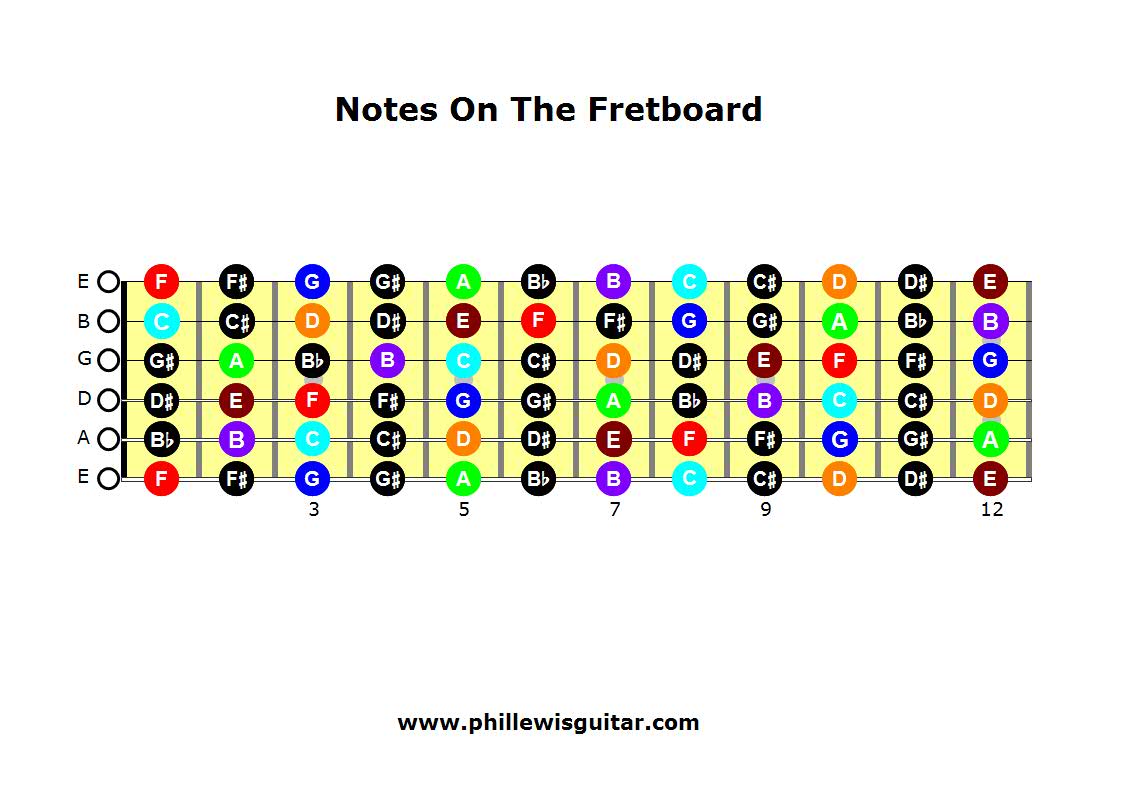
Here are two images for the sharp and flat chromatic scale notes on the fretboard from the open strings down to the 12th fret.

Both views are correct.Ĭhromatic Scale definition: The chromatic scale is the musical scale that has all 12 possible notes in it with each note separated by the distance of a half step, semitone or 1 fret on the guitar. You can say that there is only one chromatic scale or that there are 12 chromatic scales each starting on a different chromatic note.

The chromatic scale can start on any of the 12 notes.Note: I had to use a lower case “b” for the flat symbol. This wheel is a good way to envision the chromatic scale. Below is an image of the chromatic scale in a 12-part circle. Let’s look at a bulleted list to get a better definition of the chromatic scale, its notes and what it is and is not. Or stated another way, when you divide an octave into twelve equal parts, the result is the 12 notes of the chromatic scale.Ī lot of sites just put the definition of the chromatic scale in paragraph form. The chromatic scale has all 12 possible pitches, or notes, within an octave that are used to make music. So there another 11 notes in between E & E’ or any octave. In this case, E would be 1 of the 12 chromatic notes that are between E and E’ at the 12 fret. Think of an open E note and then a second E (notated E’) at the 12th fret. That could also be half the frequency if the second note is an octave lower in pitch. What is an octave?Īn octave is the distance between two notes where the second note, or pitch, is double the frequency of the first note. The higher the frequency, the higher the perceived pitch of the sound. In music, it refers to the oscillations of the sound wave.

For example, if your heart beats 60 times per minute, then the frequency is 60 bpm. What is frequency?įrequency is a physics measurement of various repeating cycles. Barry White, on the other hand, sings at a much lower pitch. Think of a female opera singer who can sing a note at a very high pitch and break a wine glass. Pitch is how low or high a musical sound is. I define the chromatic scale in detail and I have charts and scale shapes that will help you learn the scale on the guitar.Ĭhromatic scale notes & definition: What is a chromatic scale?īefore we define the chromatic scale and the notes in it, we need to define a few terms first: octave, frequency, and pitch. The chromatic scale is created by dividing the octave into 12 equal parts or notes and those 12 notes are the source for all other scales used to make music in Western music. If you are a guitar player, you must know all 12 chromatic scale notes at each fret along the entire neck and on all 6 strings. The most fundamental scale to learn is the chromatic scale.


 0 kommentar(er)
0 kommentar(er)
